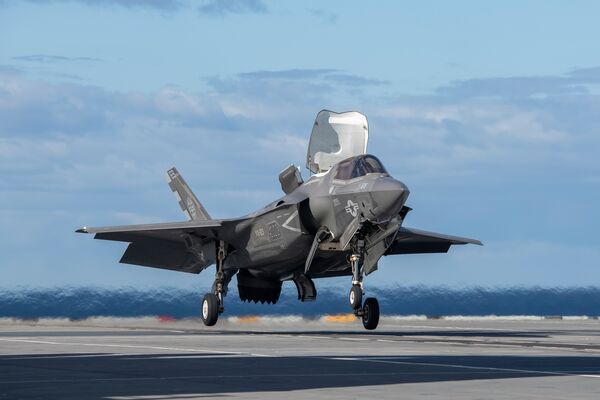
One of the two embarked F-35Bs from VX-23 completes an SRVL recovery to HMS Prince of Wales during DT-3 testing. The SRVL manoeuvre is designed to significantly increase bring-back payload. ( Kyra Helwick/DVIDS)
The UK Royal Navy (RN) and the US F-35 Integrated Test Force (ITF) are progressing new trials of the shipborne rolling vertical landing (SRVL) recovery manoeuvre onboard the aircraft carrier HMS Prince of Wales.
Executed as part of the Developmental Test phase 3 (DT-3) period, the trials are being flown to progressively expand the F-35B Lightning II SRVL flight envelope and establish safe operating limits, according to the RN. The ITF embarked two fully instrumented F-35B aircraft and three test pilots from Air Test and Evaluation Squadron 23 (VX-23) in Prince of Wales off the US East Coast on 11 October to conduct DT-3 testing over a four-week period.
The SRVL recovery technique exploits the ability of the short take-off and vertical landing F-35B to operate in a semi-jetborne mode. Forward speed maintains airflow over the aircraft surfaces, providing additional wingborne lift to augment thrust from the Pratt & Whitney F135 engine, allowing it to land at weights significantly above the aircraft's maximum hover limit.
A ship-referenced velocity vector is incorporated in the pilot's helmet-mounted display so as to provide a flightpath marker corrected for ship speed. Prince of Wales is equipped with an SRVL-specific visual landing aid, in the form of a mini fixed array of lights in the flight deck tramlines, which provides a stabilised glideslope indication.
The SRVL manoeuvre also requires close co-operation with the ship's landing signal officer (LSO) in the flying control office. The LSO monitors the aircraft's approach to the deck to check that glideslope, airspeed, attitude, and line-up remain within parameters.
Looking to read the full article?
Gain unlimited access to Janes news and more...



